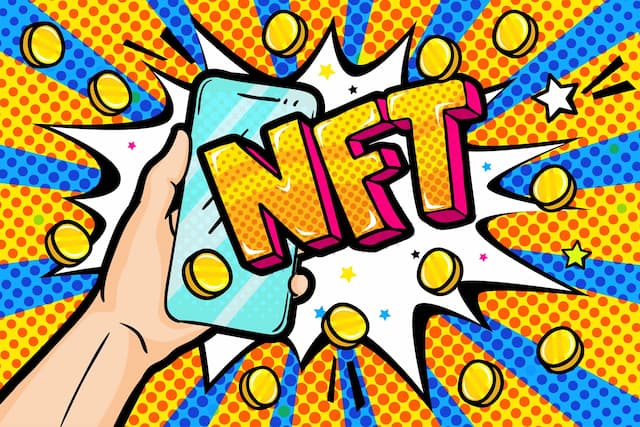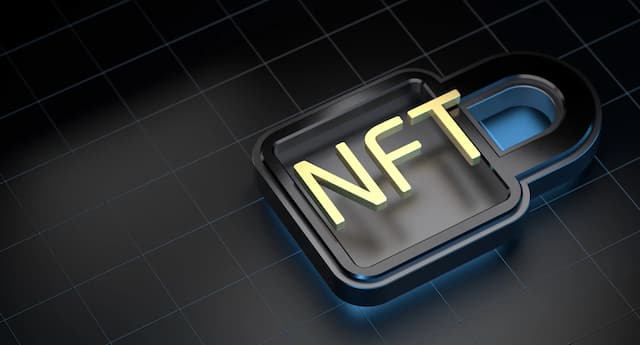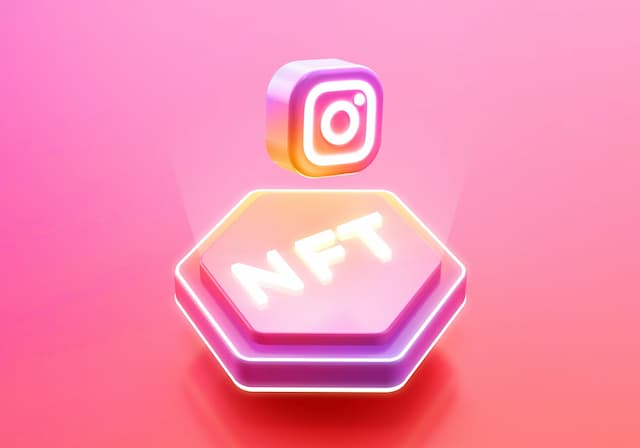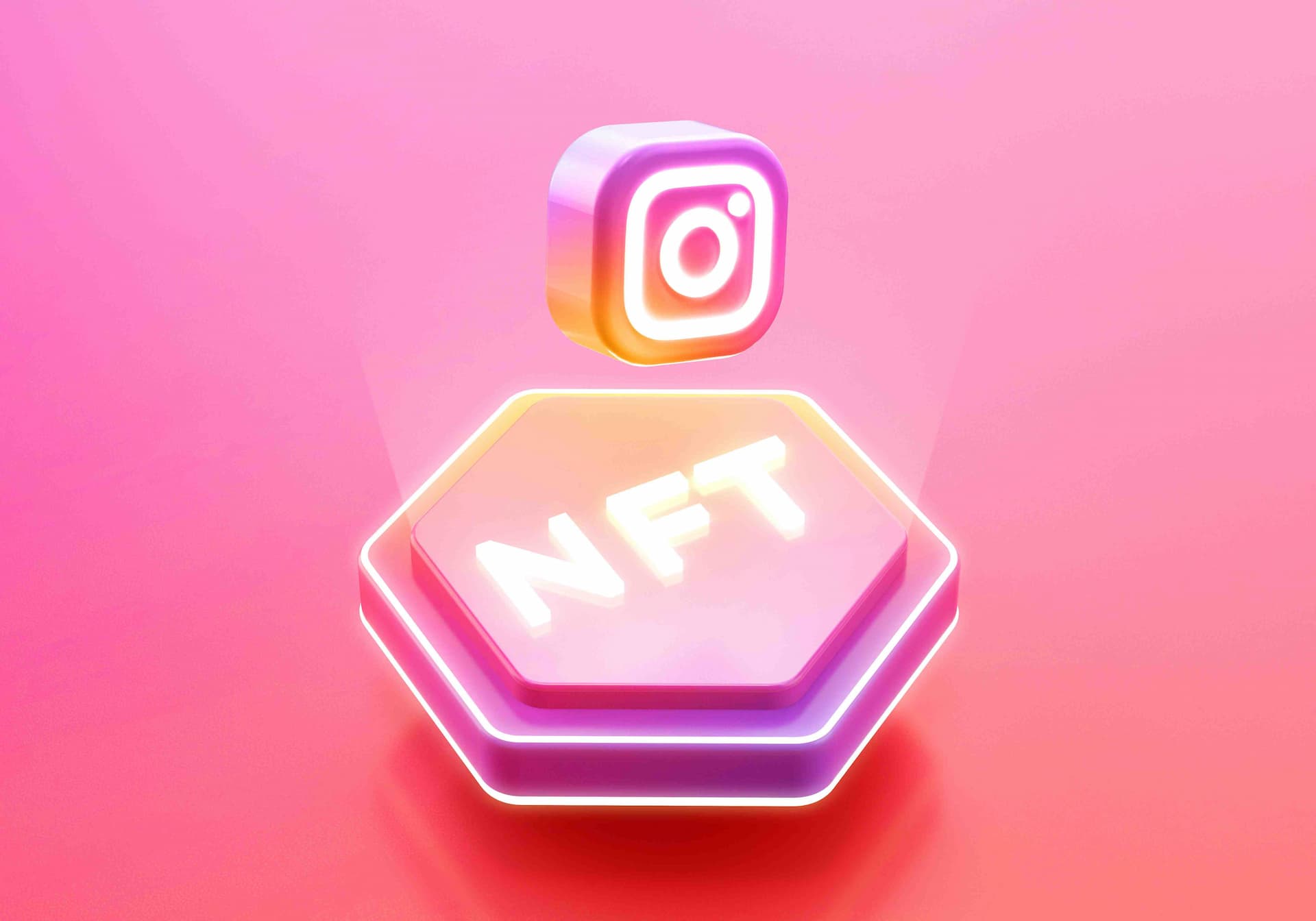Subscribe for our newsletter to have the latest stories and curated art recommendations delivered straight to your inbox
NFTs Come to Instagram
RtistiQ
 Like
Like comments
comments SAVE
SAVEAfter many months of anticipation, Instagram’s CEO Adam Mosseri revealed a new Instagram update that will integrate sharing of NFTs into its platform. Users, collectors and creators will be able to view, share and engage with the NFTs on their feed, stories, and in messages. This will be a great way to display the digital assets they own on their profiles and view the tokens of their favoured artists, politicians or other friends they follow. Clicking on the tag will display the name of the creator and owner.
The company is starting small with selected key athletes, models, and other influencers in order to test waters before building further on it. They want to learn from the community in the process and make Web3 technology accessible to a broader audience. An eventual full rollout will be available as Instagram expands this feature across the rest of their property including Facebook and their popular virtual reality Oculus programs.
Adam Mosseri made a video explaining the entire NFT integration saying “I want to acknowledge upfront that NFTs and blockchain technologies and Web3 more broadly are all about distributing trust, distributing power.” Mosseri also emphasised that support for NFTs on Instagram could help introduce the technology to a much broader range of people. In January this year, Twitter introduced NFTs on the platform as hexagon-shaped profile pictures. An icon in the corner of Instagram posts of NFTs also appears as a hexagon. The complete video be viewed here: https://twitter.com/mosseri/status/1523655590672695296
Artists will be able to connect their digital wallets to their profiles and instantly keep their followers involved with any work that has been done as well as sell to their fans. The company is acquiring and aggregating public data from open blockchains such as Ethereum and Polygon, which helps to highlight who owns what. The Solana and Flow blockchains will be integrated next. Creators can link digital wallets such as MetaMask, Rainbow, and Trust Wallet, and will soon be able to connect their Coinbase Wallet, Dapper, and Phantom.
Instagram’s integration of non-fungible tokens could lead to mainstream adoption of NFTs and support creators’ ability to make a living.
Explore our Curated Collections
SIMILAR ARTICLES

Coming Soon - Maharaja Of All NFTs. Join The Waitlist.
Starting today, the waiting list is open for early access to a never seen before, never done before NFT. The Maharaja of all NFTs is poised as a rare opportunity to own a piece of Indian Art Legacy - the works of Raja Ravi Varma one of the greatest painters in the history of Indian art. It will be brought to you by RtistiQ in collaboration with ‘Raja Ravi Varma Heritage Foundation’ and ‘Gallery G’. The iconic Raja Ravi Varma (1848-1906) is known as ‘The Father of Modern Indian Art’. The royal brought a historic turn in the art of India and became the most iconic Indian artist of all times. He united Hindu mythological subject matter with European realism historicist painting style, depicting Indian gods and characters. Raja Ravi Varma made use of oil painting and mastered the art of lithographic reproduction to bring a wind of change by focusing on the details with his play of light, shadows and adding depth using perspective. His artworks are either part of royal collections and housed in palaces in India or owned by eminent private collectors. Just as RtistiQ has established a game changing secure physical-digital link for artists & buyers, via this auction of Raja Ravi Varma’s works and lithographs, we want to set a precedent for a rare collectible that has stepped out of history’s canvas. This is an NFT of many firsts; the first NFT of a national treasure, the first and only digital NFT for Raja Ravi Varma, first one in collaboration with a foundation and the first with a traditional gallery representation. The Indian government has declared his works nationwide treasures and non-export antiquities. With this endeavour to tokenize a chapter of Indian art, our mission is to bring to any art aficionado a once-in-a-lifetime opportunity to own original Raja Ravi Varma’s works regardless of where they reside. We will be revealing more on the auction and dates soon. Make sure you join the waitlist on the RtistiQ NFT drop page. Follow us on discord https://discord.gg/HNwU7gUqjS to not miss out on any update.

How NFTs are Benefiting the Art Marketplace
Non-fungible tokens (NFTs) are certainly popular, and in the last year they have dominated art news headlines with tales of extravagant price tags. It’s a lot of heat and excitement, but just because NFTs are selling for a lot of money, does that really mean that they are good for the art marketplace? After all, there are plenty of items that sell at traditional auction houses for tens of millions of dollars, but very few artists and art lovers actually see any benefit from that kind of wealth being thrown around. But NFTs are different. They could very well reshape the way we think about buying and selling art, and they are overturning age-old expectations — in many ways for the better. Let’s look at some of the ways that NFTs are benefiting the art market. Greater Control for the Artists In the art market as we’ve known it, gallerists and art dealers have a lot of power. Their expertise and connections give them the ability to find buyers for artwork, and they can be especially helpful for artists just starting to break into higher prices. So what’s the problem with this system? Artists themselves rarely have the time to become experts in the art market or make the connections they need to move their art. That puts them at a power disadvantage. Even worse? There is almost a cultural stigma against artists diving into the pedestrian world of commerce. But NFTs allow certain new conditions for sales, conditions that artists can build into an NFT of their work. For instance, you can make an NFT of a digital work of art and guarantee that every time it is resold, the artist gets 10% of the price. What’s better, artists have access to the bidding information and the entire provenance of their work. That means they can see everyone who bought their artwork and how much they paid. This single change will revolutionize the artworld by leaps and bounds, helping artists to get more of the money their work generates. Greater Access for Art Lovers on Marketplaces On the other side of the coin are the art lovers. Many people want to buy art , but if you aren’t well connected, it can be hard to have access to everything that’s actually available out there. Of course, gallerists and auction houses and art dealers want to meet with and encourage every single art buyer. But the reality is that there is an emphasis on big time art buyers in the current art market. After all, if you are an art dealer with limited resources, are you going to focus on the tycoon you know who spends millions on art each year , or the middle income art lover just now wanting to buy? With NFTs, marketplaces are wide open. Auctions are available to everyone, and little if any information is reserved for a select few. This is letting more people leap into the world of art buying. That combined with the empowerment of artists means a lot more direct buying and selling of art. NFTs Are Changing When we think of NFTs in the artworld today, we predominantly think of auctions for blocks in a blockchain that are linked to digital files — like JPGs, MPEGs, GIFs, and so on. This has caused many to scratch their heads because when you purchase NFT arts for sale, you aren’t the only person with access to the art work. Anyone can still copy and share these files infinitely. But here is the thing: NFTs aren’t done evolving, not by a long shot. Remember when we talked about artists being able to use NFTs to get 10% of all future sales of their art? That’s what is called a smart contract. These are critical elements of NFTs, giving people the ability to have contract clauses automatically fulfilled when certain terms are met. And since NFTs copy the provenance of an artwork in a safe and secure way, they take the burden of provenance off of both the artist and the art buyer. Put these two things together, and you can see how NFTs won’t just become interlinked with the digital art market. They can also become critical features of the physical art market. As NFTs grow and change, we will see the art market shifting along with them. We are standing at the precipice of a major development in the art world. NFTs are going to be a core piece of this change.

Protecting Your Digital Assets and NFTs
With the rising popularity of NFTs and blockchain technology, it has become extremely important for NFT owners to protect their digital assets from theft or hackers. Below are a few tips you can follow to protect your NFT collection: Never disclose the private key or seed phrase of your wallets When you buy an NFT it resides in your wallet. Wallets like Metamask have a seed phrase and each account in it has a private key. Both of them should be kept secret and should not be shared with anyone. Sharing these will give the control of your wallet to the other and they can easily transfer your digital assets/NFTs to their wallets. Keep your digital assets/NFTs in multiple wallets In case you hold a large number of NFTs, another way to protect them is to keep them in different wallets. You can use a wallet to purchase the NFTs from different marketplaces and after that you can transfer them to another wallet which you haven't connected with any marketplace. By spreading your NFTs across different wallets, you can minimise the chance of losing all your NFTs as there is less chance of all your wallets getting hacked together. But this comes at a cost, you will have to bear the transaction charges for the wallet to wallet transfers. Use hardware wallets Hardware wallets are another excellent option to protect your Digital Assets. Although it comes at a cost but is one of the safest options to secure your assets. Ledger and Trezor are two most popular options for hardware wallets. These wallets keep the private key offline and thus provide an extra layer of security. Beware of Scammers With NFT marketplaces becoming more popular with the rise in crypto trading, there is also an increase in the number of scammers on these platforms. The most common way of scamming is through Discord DMs saying you have won an NFT from a popular NFT project. Before clicking on any such links you should double check with the NFT Project’s site or with any other community members. It's better not to trust any links which you receive in Twitter, Discord etc from people you don't actually know. Increase your knowledge about NFTs and Marketplaces Whenever you buy an NFT, spend some time to gain knowledge about that NFT project and its future roadmap. You should increase your knowledge about the NFT marketplaces so that you don't fall into the trap of scammers. For example, Opensea shows a blue checkmark next to verified projects. Likewise each platform will have its own way to show authentic NFTs. Self educating is the best way to identify scammers and to be safe from them. Follow the guidelines above to ensure you are able to robustly safeguard your NFTs. Your digital assets are as important and valuable as your physical ones and need an equal level of protection.
ARTICLES ON ART AND TECHNOLOGY

ART AND TECHNOLOGY
What is Digital Fashion? Is it Art and How to Shop for Digital Fashion?
Introduction The fashion industry’s incessant transition into the digital landscape is a perfect example of how lines between the digital and physical worlds are blurring. The advent of Metaverse and Web 3.0 has pushed fashion designers to showcase their IRL collections through digital clothing platforms — providing unique ways for people to interact with fashion trends online. Impressive, isn’t it? Well, in this post we will get acquainted with the world of “Digital Fashion” and share ways you can shop for it in 2023! So let’s cut to the chase and dive right in, shall we? What is digital fashion? Digital fashion allows consumers to try a virtual dress that has been digitally adapted (virtually fitted) to their bodies through “Virtual Try On” technology powered by Augmented Reality. The idea is to build a fashion product or culture in which the digital dress will become as exclusive as the real one. Imagine gifting someone a dress that doesn’t physically exist. That’s digital fashion for you. It successfully represents the link between virtual reality and tailoring, but shouldn’t be boiled down to just a glorified version of an Instagram filter. Is digital fashion an art? Yes, digital fashion is an art. It is essentially an extension of a designer’s digital illustrations. But, digital fashion is more than simply an art gallery. It is an opportunity for fashion designers to showcase their creativity by using digital fashion platforms that allows them to develop more revenue streams. After all, fashion designers can turn their digital outfits into Non-Fungible Tokens (NFTs) and trade them using blockchain. How to shop for digital fashion? Now that you know how digital fashion functions, it’s time to get in the game! One of the best ways to shop for digital fashion is through digitalfashion marketplaces. These online marketplaces foster cyber couture and push design boundaries — redefining the world of fashion as we know it. Here are some of the renowned digital fashion houses and marketplaces worth mentioning in the post. Feel free to check them out as the digital fashion products on them are exciting enough to captivate fashion enthusiasts worldwide ● DRESSX ● Replicant ● Auroboros ● DIGITALAX ● The Dematerialised ● Tribute Brand ● XR Couture ● UNXD ● The Fabricant ● Carlings ● Rtfkt ● Happy99 ● Republiqe These digital fashion marketplaces function by using real-time Augmented Reality. Consumers can use their camera phones to try digital fashion products for free. Not just that, consumers will have the choice of transactions when purchasing digital fashion. They can either use “on-chain” or “off-chain” transactions. The former requires users to own a cryptocurrency wallet or open one inside the digital fashion platform, allowing them to turn clothing into a digital asset. The latter involves payment through regular credit cards. Dont miss out on our digital fashion auction taking place between the 26- 29 Jan 2023. Click here and get ready to bid on exclusive items for your digital collectibles. It’s your opportunity to build a spectacular digital wardrobe and collect digital fashion art to show off online! Final thoughts! “Digital Fashion” is still an emerging trend that has the potential to make digital wearables and fashion NFTs more accessible — especially since it is powered by exciting innovations. However, brands need to make more and more consumers aware of the attractive features of digital fashion, more importantly, its affordability. We believe that the meta-closet or digital closet is the way of the future and people will give attention to building a digital wardrobe parallel to building a physical one. Did you find this post helpful? Let us know in the comments. Also, don’t forget to check out other informative posts in the blog!

ART AND TECHNOLOGY
NFTs Come to Instagram
After many months of anticipation, Instagram’s CEO Adam Mosseri revealed a new Instagram update that will integrate sharing of NFTs into its platform. Users, collectors and creators will be able to view, share and engage with the NFTs on their feed, stories, and in messages. This will be a great way to display the digital assets they own on their profiles and view the tokens of their favoured artists, politicians or other friends they follow. Clicking on the tag will display the name of the creator and owner. The company is starting small with selected key athletes, models, and other influencers in order to test waters before building further on it. They want to learn from the community in the process and make Web3 technology accessible to a broader audience. An eventual full rollout will be available as Instagram expands this feature across the rest of their property including Facebook and their popular virtual reality Oculus programs. Adam Mosseri made a video explaining the entire NFT integration saying “I want to acknowledge upfront that NFTs and blockchain technologies and Web3 more broadly are all about distributing trust, distributing power.” Mosseri also emphasised that support for NFTs on Instagram could help introduce the technology to a much broader range of people. In January this year, Twitter introduced NFTs on the platform as hexagon-shaped profile pictures. An icon in the corner of Instagram posts of NFTs also appears as a hexagon. The complete video be viewed here: https://twitter.com/mosseri/status/1523655590672695296 Artists will be able to connect their digital wallets to their profiles and instantly keep their followers involved with any work that has been done as well as sell to their fans. The company is acquiring and aggregating public data from open blockchains such as Ethereum and Polygon, which helps to highlight who owns what. The Solana and Flow blockchains will be integrated next. Creators can link digital wallets such as MetaMask, Rainbow, and Trust Wallet, and will soon be able to connect their Coinbase Wallet, Dapper, and Phantom. Instagram’s integration of non-fungible tokens could lead to mainstream adoption of NFTs and support creators’ ability to make a living.

ART AND TECHNOLOGY
Protecting Your Digital Assets and NFTs
With the rising popularity of NFTs and blockchain technology, it has become extremely important for NFT owners to protect their digital assets from theft or hackers. Below are a few tips you can follow to protect your NFT collection: Never disclose the private key or seed phrase of your wallets When you buy an NFT it resides in your wallet. Wallets like Metamask have a seed phrase and each account in it has a private key. Both of them should be kept secret and should not be shared with anyone. Sharing these will give the control of your wallet to the other and they can easily transfer your digital assets/NFTs to their wallets. Keep your digital assets/NFTs in multiple wallets In case you hold a large number of NFTs, another way to protect them is to keep them in different wallets. You can use a wallet to purchase the NFTs from different marketplaces and after that you can transfer them to another wallet which you haven't connected with any marketplace. By spreading your NFTs across different wallets, you can minimise the chance of losing all your NFTs as there is less chance of all your wallets getting hacked together. But this comes at a cost, you will have to bear the transaction charges for the wallet to wallet transfers. Use hardware wallets Hardware wallets are another excellent option to protect your Digital Assets. Although it comes at a cost but is one of the safest options to secure your assets. Ledger and Trezor are two most popular options for hardware wallets. These wallets keep the private key offline and thus provide an extra layer of security. Beware of Scammers With NFT marketplaces becoming more popular with the rise in crypto trading, there is also an increase in the number of scammers on these platforms. The most common way of scamming is through Discord DMs saying you have won an NFT from a popular NFT project. Before clicking on any such links you should double check with the NFT Project’s site or with any other community members. It's better not to trust any links which you receive in Twitter, Discord etc from people you don't actually know. Increase your knowledge about NFTs and Marketplaces Whenever you buy an NFT, spend some time to gain knowledge about that NFT project and its future roadmap. You should increase your knowledge about the NFT marketplaces so that you don't fall into the trap of scammers. For example, Opensea shows a blue checkmark next to verified projects. Likewise each platform will have its own way to show authentic NFTs. Self educating is the best way to identify scammers and to be safe from them. Follow the guidelines above to ensure you are able to robustly safeguard your NFTs. Your digital assets are as important and valuable as your physical ones and need an equal level of protection.








